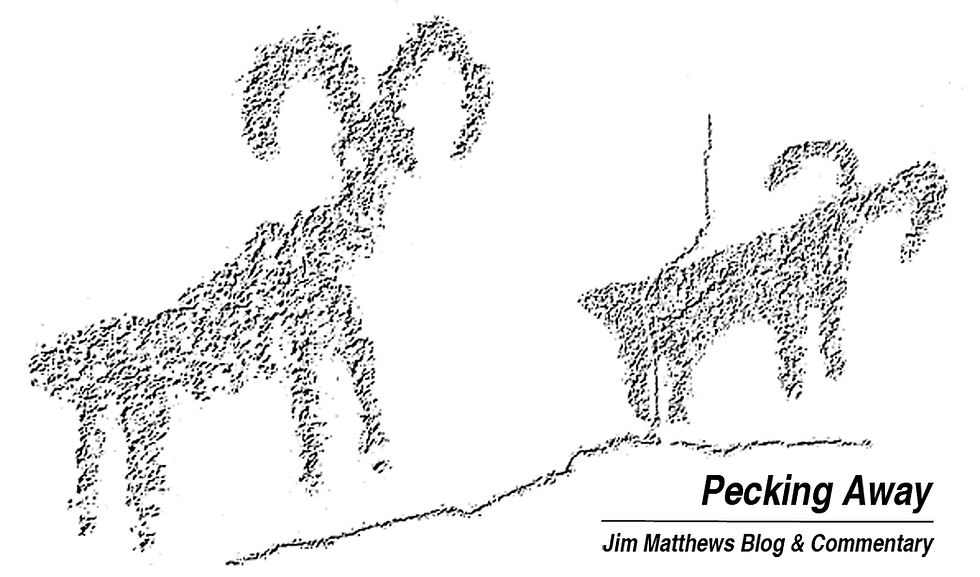A fishing technique for pumpkinseed and other sunfish
- Jim Matthews
- Jun 12, 2016
- 3 min read

By JIM MATTHEWS
www.OutdoorNewsService.com
I am an unabashed fan of sunfish, all sunfish. But pumpkinseed are easily the prettiest of all the fish in the sunfish family, with radiating colors of bronze, green, and metallic brown. They have pale blue vermiculations across the gill plate and a reddish-orange tip to the black opercular flap. But like the prettiest sister or the most handsome son in any family, they aren’t very bright. This makes them perfect fish for R.G. Fann, my brother-in-law, and me.
We used to make annual trips to Big Bear Lake to catch them in the spring and early summer when they massed in the shallows of the lake’s bays. With lower reproductive rates than bluegill, they practically disappeared from Big Bear for a number of years, but I have it on good authority their numbers have rebounded and we may be there now as you read this.
Sadly, pumpkinseed aren’t as widely distributed as bluegill or their closest cousin, the redear, and they don’t get as big either. According to Samuel M. McGinnis, the author of Freshwater Fishes of California, Big Bear is the only place they occur in Southern California, but they are also found in nearby Green Valley Lake, brought there I’m sure by anglers who liked them. McGinnis says they are also found in Honey Lake, a number of waters in Santa Clara County, and in the Klamath, Lost, and Susan river drainages’ reservoirs and backwaters. Put them on your California bucket list.

These panfish move into the shallows as soon as the water starts to warm in the spring for the spawn, and then they stay there the rest of the summer and early fall. This tends to segregate them from bluegill and redear that move back into deeper water after spawning. Oh, they may mix daily as the other panfish come up to feed, but the pumpkinseed stay shallow. This allows a measure of protection from predators, which is a good thing because of their lower reproductive capacities.
I bring up pumpkinseed because they were the inspiration for a spring and summer panfishing technique developed by R. G. he simply calls the “pop-and-drop.” For fly-fishermen, two-fly rigs are not new, and many trout anglers fish a dry-and-a-dropper, especially on smaller streams. R.G.’s rig consists of a small, buoyant, panfish-sized popper (No. 12 or smaller) with a piece of leader tied into the bend of the popper’s hook. A small panfish wet fly or nymph is tied to this leader so it sits above the bottom or bottom weeds. (To protect our fly-fishing honor, I won’t tell you that we’ve been known to use a regular hook with a wax worm or maggot larvae impaled on the hook if the panfish are being particularly finicky and not eating the dropper fly.) For those of you who aren’t fly anglers, this same rig can be cast very well on ultralight spinning tackle, which is perfect for these panfish.
At Big Bear Lake, most of the water we fished was rarely more than knee deep. So when fishing with a single, weighted fly, R.G. would get snagged on bottom vegetation, but when suspended beneath the popper, he didn’t have to deal with snags. But what cinched the deal for him was that the aggressive pumpkinseed would chase a hooked family member, trying to grab the fly from his or her mouth. The brightly-colored popper gave those pumpkinseed another target to chase. Acting more like an 11-year-old, R.G. would erupt into laughing fits when he’d watch little packs of pumpkinseed chase the darting popper while it streaked around under water near the hooked panfish. Usually a second fish would be hooked.
The technique works on all panfish, especially when they are stacked up on spawning beds, but it also works throughout the summer when they prowl the shallow shoreline areas at dawn and dusk. It seems fitting you should catch them two-at-a-time in the spring when they are mating, doesn’t it?
END
[Jim Matthews is a syndicated Southern California-based outdoor reporter and columnist. He can be reached via e-mail at odwriter@verizon.net or by phone at 909-887-3444.]























Comments